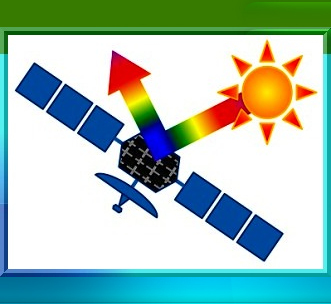Meta-reflector logo

One of the big problems for spacecraft in the coldness of space is heat. Whatever parts of the spacecraft are exposed to the direct light of the Sun will begin to heat up. There is also the problem of heat in the spacecraft that needs to be radiated away.
Spacecraft are protected from overheating by metamaterial optical solar reflectors (meta-OSRs). The meta-OSRs are the outermost layer of the coating on the outside of the spacecraft. They are designed to efficiently radiate away infrared heat generated by the spacecraft while also reflecting most of the optical part of the solar spectrum.
The meta-OSRs are very important to the spacecrafts ability to control heat. They are glued to the external skin of the radiators. The current meta-OSRs are usually quartz tiles that effectively combine thermos-optical properties with the ability to survive in the harsh environment of space. Unfortunately, quartz tiles are both fragile and heavy. They increase assembly and launch costs substantially. They also cannot be added to a curved surface.
Other commercial solutions to deal with heat on spacecraft have been based on polymer foils which quickly degrade. They do not usually last more than five years and are thus unsuitable for long missions.
Now a team from the University of Southampton in the U.K. has developed a new meta-OSR. They employ a metal oxide which is commonly used for transparent electrical contacts. In the new meta-OSRs, the metal oxide is formed into a metamaterial pattern with a strong infrared emissivity and a low absorption of the optical solar spectrum. The team has also developed a “smart” radiator based on their new metamaterial design. This smart radiator permits the radiative cooling of the spacecraft to be tuned. It utilizes a different metal oxide.
Professor Otto Muskens, from the University of Southampton and principal investigator of the study, said: "The meta-OSR technology is entirely based on durable and space-approved inorganic coatings, which can be applied onto flexible thin-film substances with the potential to be developed as a new technology solution. Since the assembly and launch costs of OSRs is several tens of thousands of US dollars per square meter, even small improvements in weight reduction can make a significant change to the space industry."
The study was part of a two-year Horizon 2020 space technology project. The University of Southampton is a member of the META-REFLECTOR consortium. The Italian Centro Ricerche Elettro-Ottiche (CREO), the Danish nanoimprint developer NIL Technology and Thales Alenia Space are also members of the consortium.
The journal ACS Photonics published two reports on the work of the consortium. They are 'VO2 Thermochromic Metamaterial-Based Smart Optical Solar Reflector' and 'Metasurface optical solar reflectors using AZO transparent conducting oxides for radiative cooling of spacecraft'.
Doctor Kai Sun from the University of Southampton said, “All of the partners have actively worked together to ensure the design and fabrication are suitable for its transfer to mass-production. It is an exceptional research experience to transfer the cutting-edge research idea to a commercial product.”
The Southampton team is currently working on expanding the prototypes to larger areas through the use of processes developed by NIL Technology. First space tests of the new meta-OSR are in preparation.
Doctor Sandro Mengali at CREO said: “Passive control of the thermal emissivity is important to preserve precious heat during start-up and eclipses and to maintain the temperature stability of the spacecraft. Currently, thermal emissivity control requires bulky mechanical components such as louvers, which are extremely expensive and prone to failure, posing significant risk to missions. The smart meta-OSR technology will offer a valuable new tool for thermal engineers of spacecraft, of particular importance for the lightweight segment of the satellite market."